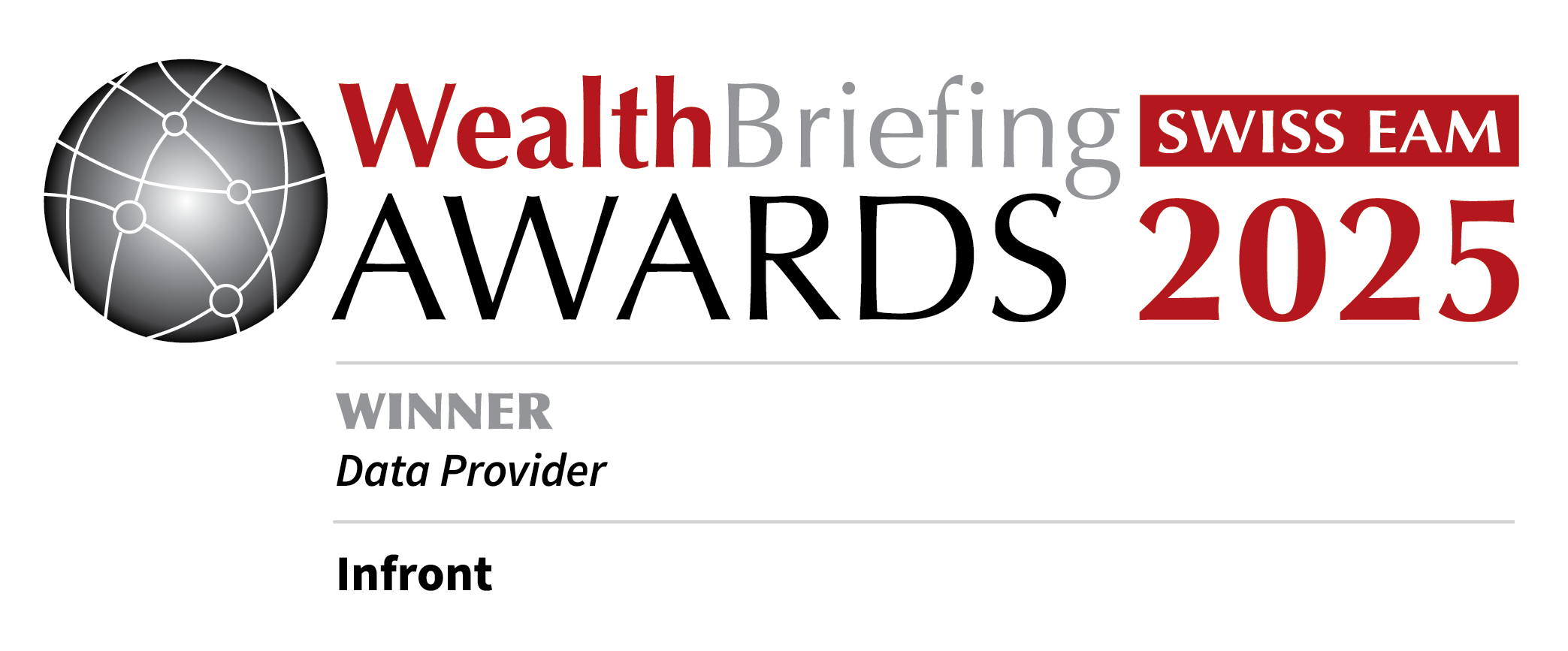17 JANUARY 2024
Wealth management outlook: Focus on technology and data

There’s an overarching uncertainty among wealth managers. Ongoing global conflicts, elevated interest rates and inflation, rising government bond yields. Valuations have slid from their peaks in 2021.
On top of this, managers also face other ongoing pressing challenges, particularly around people, competition, and regulation. If these are not properly managed, value generation for clients could vanish.
The question here is: how can managers add value to clients in this challenging market?
We think the answers come down to two things: having the right tools and the right data.
People, people, people: client centricity will continue to drive businesses
Clients are getting younger, wealthier, and bring along different expectations to their parents. The Great Wealth Transfer is set to see $30-68 trillion transfer from The Silent Generation and Baby Boomers to their heirs. These, mostly Millennials, largely want to switch managers once they inherit. This puts managers under increasing pressure to understand their needs, lest they switch firms.
While clients are becoming younger, managers themselves are greying. Many also have no succession plans. This leaves generational gaps both within organizations and between managers and clients, making satisfying new, younger clients challenging. Now, this is not to say older managers cannot adequately service younger clients or even exceed their expectations, but managers must recruit younger talent to serve clients across their entire lifetimes and secure succession plans to solidify the future of their firms.
The competition: Wealth management as a profit center
Alongside the people challenges from within, managers face an increasingly competitive landscape from without.
Digitial brokers and wealthtech providers like Robinhood, Betterment, and Acorns are coming into the market and democratizing investment. This comes primarily through their technology offerings. Easy and intuitive platforms offer modern digital user experiences, opening up wealth management to those which it was previously unavailable and other underserved segments.
Retail banks are also entering the sector, due to technological and industry changes that make it more cost effective to serve a wider variety of customers. They’re competing to get their share of the over $100 trillion in asset growth that’s estimated to hit the wealth management industry by 2030.
Next to all of this, there is also an increasing consolidation. Larger firms are buying up smaller firms, as the former possess the capital and human resources to serve more people more efficiently. Large firms are also fortifying their technology capabilities by scooping up financial tech firms, as both of the world’s two largest wealth managers, UBS and Morgan Stanley, have recently made tech acquisitions.
This means wealth management is increasingly being seen as a profit center. Which it can be as long as firms know how to best serve their clients with the right tools and right data.
Regulation: A continued struggle, and opportunity
Regulations are an ongoing concern. Costs are only set to grow as regulators adjust existing rules and add new ones to keep up with the speed and pace of the digital age.
Next year, firms will have to deal with the European Markets Infrastructure Regulation (EMIR) Regulator Fitness and Performance Programme (Refit). This regulation seeks to reduce systematic risks in European derivatives markets, including in the UK, and the updated rules require more data, as firms have to report on 89 new fields.
Next to this, firms entertaining offering digital assets will also have contend with the Markets in Crypto Assets (MiCA) regulation. The regulation, which seeks to increase transparency in the digital assets market, will also be data-heavy. The first batch of rules comes into effect 30 June 2024 and the second 30 December 2024. These are, of course, next to the General Data Protection Regulation (GDPR), the second Markets in Financial Instruments Directive (MiFID II), and Environment Social and Governance (ESG) measures, with the Corporate Sustainability Reporting Directive (CSRD), which amends the Non-Financial Reporting Directive (NFRD).
In July 2024, the 3 ESA’s (EBA, ESMA and EIOPA) published the expected second batch of policy products under the DORA regulation. The Digital Operational Resilience Act (DORA), or more formally known as Regulation (EU) 2022/2554, took effect on 16 January 2023, with final industry compliance required by 17 January 2025. With this second batch now being finally available we now have 6 months before the overall go-live date of the compliance kicking into full force. There is still one RTS in the making being the one for subcontracting. Read more in our latest update article on DORA.
This means regulation is a continued struggle. Yet firms can turn these struggles into opportunities by focusing on targeted application of technology, good data, and improved analytical capabilities.
Directing efforts in this direction helps streamline and automate client and regulatory reporting, improves efficiency, and lowers compliance costs.
Focus on the tech
Technology is a significant way managers can add value to clients.
The first point of call for firms should be digitalization. Half of High-Net-Worth Individuals (HNWIs) and affluent investors want their primary wealth manager to improve its digital capabilities. Here, customer centricity is key. For example, firms should work on creating intuitive customer portals where clients can access portfolios 24/7, contact managers directly, access documentation, and even bring together banking and investing functionality. Relevant research should also be made available, and functionality for approvals and sign offs should be present, as many in younger generations prefer digital interaction.
Another point of attention is advanced analytics. A broad set of capabilities, advanced analytics turns data into insights. They also free up managers’ time for clients, as they spend a significant amount of time on non-revenue generating tasks. Technology like robotic process automation (RPA) can automate manual compliance tasks to boost efficiency, risk assessment, and reporting. Artificial intelligence (AI) and machine learning (ML) can be used to create custom portfolio solutions for clients, lowering costs.
Yet, the focus on technology is only part of the story. What matters most is the data on which these technologies and models are trained.

It all comes down to data
Improving client service, compliance, and maintaining a competitive edge are all based on having good data. Good data is appropriate, which means it is accurate, complete, timely, and consistent.
Accuracy involves data that’s fit-for-purpose while completeness translates to having all the necessary data for any given purpose. Not just large volumes of data. Accuracy and completeness, though, reinforce one another. Data cannot be accurate if it is not complete and if it’s incomplete it’s inaccurate. Firms, hence, need many different data types, such as reference, ESG, price, and regulatory data to cover their broad business needs and custom data to cover specific needs.
Timeliness in today’s fast-paced world is also key. Firms need accurate, complete data when, and where, it’s needed. This enables better decision-making, better trades, and increases portfolio personalization. Here, request-response and snapshots, alongside real-time data is of importance, or a combination of these options, as this enables flexibility-boosting efficiency and helps lower costs.
For consistency, it’s a fairly simple equation: error-free data that shares the same format and is regularly synched across systems and platforms, whether mobile, desktop, or web-based.
And the underlying motivator for good data comes down to having the right data partner. Here, partners should not just be companies that only deliver data, or technology for that matter, but actively help firms solve problems to build efficiencies and make them more competitive. This cooperative approach sets the stage for implementing the right data and technology tools. And if managers have these in place, they are well set up to take advantage of the opportunities of increased client satisfaction and revenue. Successfully weathering market swings, changes, and growth.
Want to stay on top of the latest news in the WealthTech space?


